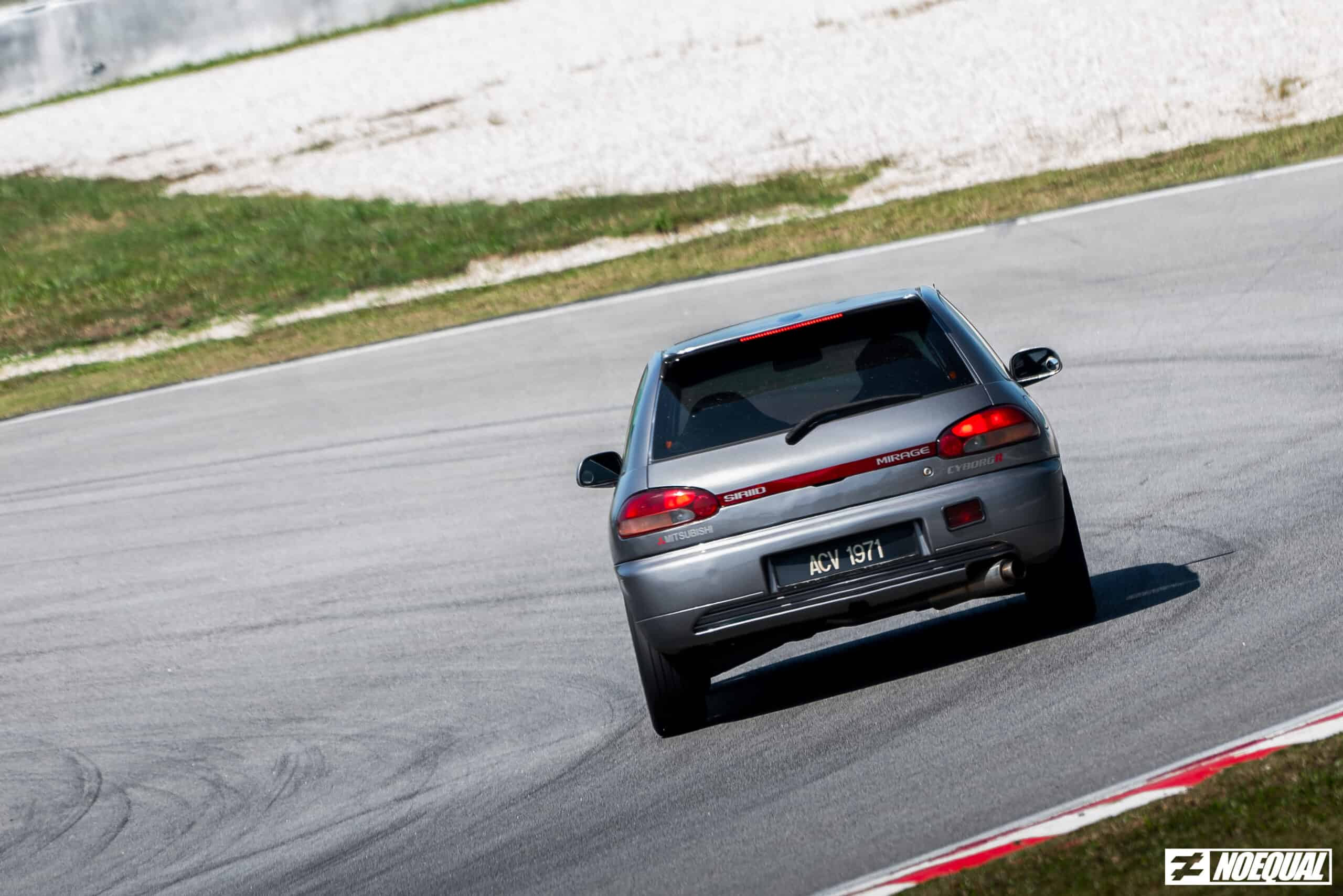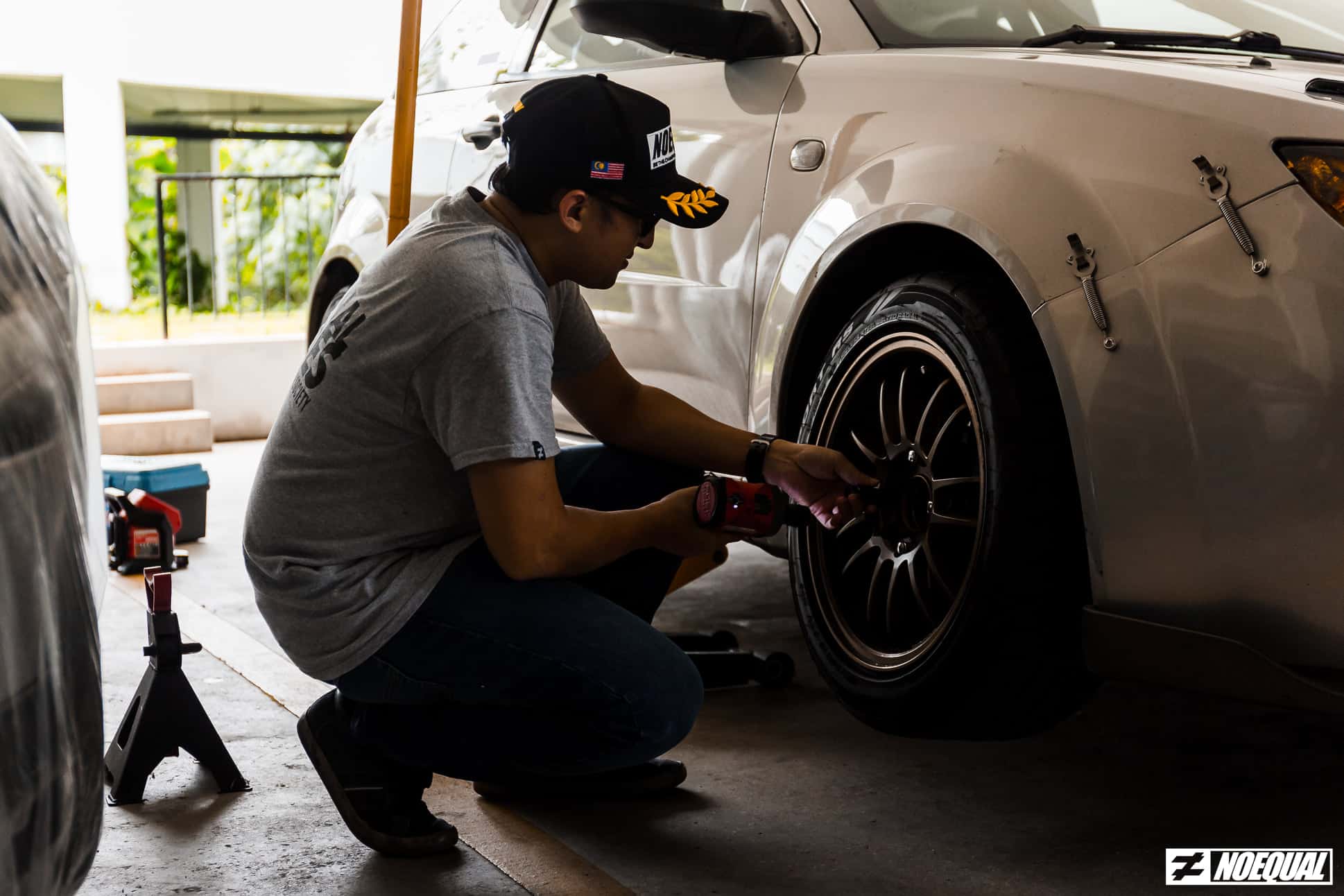
Now with the 'Movement Control Order' or MCO being more lenient,
motorsports has finally been announced as a "no-contact" activity. Though with strict SOPs, trackdays and driving courses are finally back on the calendar. Despite the current situation, it might actually be the perfect opportunity for first timers to actually go out for their run around the track. However, there are a few criteria that you should think about before setting your lap time.
If it's your first time, surely you'll be getting some butterflies the night before while thinking about some extreme scenarios that most likely will not happen. If you take the right steps, you'll be aching for more after your session and complain about how those 2 hours went by so quickly. It's all about prepping from the start so you don't have to worry later.

#1. Choosing The Right Trackday For You
There are quite a lot of things to factor for your first ever track day. If you have a naturally-aspirated vehicle, you are quite safe in general. However, larger tracks such as Sepang may favour the larger displacement or turbocharged engines where there are long straights while smaller tracks with many corners such as Dato' Sagor in Perak or Melaka International Motorsport Circuit (MIMC) favours the lighter and smaller displacement vehicles.
But on tracks like Sepang where the track temperature often hits 60 degrees Celcius, your turbocharged car will thank you if you opt for a night session. The heat soaks during an afternoon session are known to have been difficult for turbocharged cars. Another factor to consider is the amount of cars during the session. A lesser amount of cars is much more fun and less intimidating for first timers however it might be a bit more expensive as compared to a greater number of cars.

#2. Check Your Tires
As a first timer, don't go out of your way to find the stickiest rubber for your car just yet. As long as your tires are still within it's usable limit, you should be fine to go out for a session. Unless you know your tires are in pretty bad shape and might even be considered dangerous in the rain, get yourself a set of some reputable tires to ensure your safety as well as others. You really don't wanna come home with a hefty bill for your car and on-track damages.
Having dealt nearly a year of being stuck at home, many cars have not really been moving that much. While this does not mean your tires will just shred off during your first lap but you might not wanna give it the beans. However if your tires are regularly maintained, just be aware about your tire pressure especially if you choose to go for an afternoon session especially in the current heat.
As you drive on the track, the air in your tires will heat up and expand. It's best to lower your pressure by a couple of PSIs so that when it does heat up, you'll be at optimum pressure. If you do own a tire pressure gauge, bring it along and give your tires a check after a few laps around the track and adjust when necessary. While you're at it, secure your wheel nuts every now and then so they don't fall off while cornering.

#3. Top-up All Your Fluids and Check For Leaks
It'd be a good idea to make sure your engine too is running as healthy as possible. Giving it a service is ideal but if your oils are fine, then you're good to go. Just make sure everything is at a level where they are supposed to be. The main fluids are your coolant, engine oil, gearbox oil and your brake fluids.
DO NOT for whatever reason substitute your coolant for water. Water will boil and evaporate and might cause your engine to lock up. Always put coolant in your radiator.
On the track, you'll most likely be driving your car to the absolute limits which means your engine bay will get hot. If you have external gauges, be it via the OBD-II port or even a more accurate sensor-based gauge, keep in mind your temperatures. It's fine if you do not have those fancy gauges, just don't redline your car on every lap. Make sure to give it some cooldown laps after every flying lap and just keep an eye on your instrument cluster for any unwanted lights.
Even when going into the pits, do not immediately shut off your engine. Let it idle for a while to cool naturally. Once you're at the pits, check your dipstick or the levels on the tank, for any fluids that are lower than usual. If so, check under the car for any leaks or drips.

#4. Bring The Right Equipment
Though it goes without saying, dress appropriately for track days. While helmets, gloves and seatbelts are mandatory, just remember to wear clothes that cover most of your body parts. No, we're not asking you to dress like The Stig (however that is the most appropriate clothing for the event), just adhere to your organiser's dress code. No sandals or flip flops as well, make sure to wear thin soled shoes for a good pedal feel.
Despite these next few things are all for preventive measures that won't be used unless something happens, it is still a good idea to bring it along. Some tools that you should remember to also include is not only your screwdriver but more importantly your tow hook for any unwanted accidents, a tire wrench to keep your wheel nuts snug, your wheel lock nut (if you have one), a set of spanners or sockets and some zipties.
It's also a good idea to bring along some coolant, engine oil and brake fluid for an emergency top-up in any cases of leaks. Some events may require you to have a fire extinguisher on stand by in your car but it all depends on the organiser, so just check with them prior to the event. Also, bring water for yourself. As it tends to be extremely hot nowadays and Sepang just feels like another step closer to the Sun, it's always a good idea to keep hydrated at all times.

#5. Adhere To The Rules
Especially if it's your first time, don't be late. Get to the track, park your car and proceed with registering yourself at the counter. The last thing you want to do is go onto the track, not understanding what each light or flag means or worse, putting yourself in danger. Ensure that you are available during the safety briefing just before the start of your session and do ask questions if you are unsure of anything.
Understand the flags. A green flag means go as the track is safe for use. A yellow flag means that there is a hazard on a section of the track and you are required to slow down your pace and also, overtaking is a no-no during this flag. While a red flag means the session has been halted and you should head back to the pits. These flags apply to all drivers however, if you do see a black flag, it's most likely specific to you as you might have some smoke or noticeable leaks coming from your car.
Also, understand the etiquettes of circuit driving. Do not overtake in the corners, only overtake when there is room to do it safely. This isn't a race, if you're slower than the car behind, give way for them to overtake. If you're on a cooldown lap, turn on your indicator and stay off the racing line. Staying in the racing line during a cooldown lap can be dangerous for you and others as it may catch other drivers off-guard.

Just Enjoy Your Trackday
Remember to be well rested prior to the trackday. Being mentally and physically calm is key here. When everything goes smoothly, you're in control of your own session. Stay hydrated at all times and put your focus into fine tuning each and every lap. Mind other people and follow the rules. Understand your limits and don't try to do anything you're uncomfortable with.
Everybody thinks they are a racing driver behind the wheel especially when you're in the track next to some extremely fast cars but let go of your ego. You can time your laps if you want to, but personally it's always best to understand the track and find the places where you can be a little bit better on the next lap. Nobody likes the guy who drives like they own the road.
Written by | Danial Malek
 Now with the 'Movement Control Order' or MCO being more lenient, motorsports has finally been announced as a "no-contact" activity. Though with strict SOPs, trackdays and driving courses are finally back on the calendar. Despite the current situation, it might actually be the perfect opportunity for first timers to actually go out for their run around the track. However, there are a few criteria that you should think about before setting your lap time.
If it's your first time, surely you'll be getting some butterflies the night before while thinking about some extreme scenarios that most likely will not happen. If you take the right steps, you'll be aching for more after your session and complain about how those 2 hours went by so quickly. It's all about prepping from the start so you don't have to worry later.
Now with the 'Movement Control Order' or MCO being more lenient, motorsports has finally been announced as a "no-contact" activity. Though with strict SOPs, trackdays and driving courses are finally back on the calendar. Despite the current situation, it might actually be the perfect opportunity for first timers to actually go out for their run around the track. However, there are a few criteria that you should think about before setting your lap time.
If it's your first time, surely you'll be getting some butterflies the night before while thinking about some extreme scenarios that most likely will not happen. If you take the right steps, you'll be aching for more after your session and complain about how those 2 hours went by so quickly. It's all about prepping from the start so you don't have to worry later.









